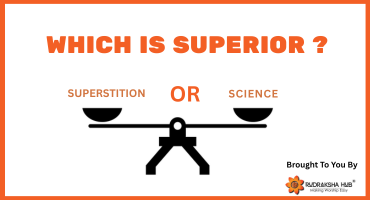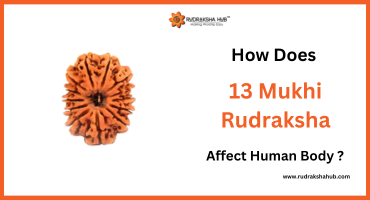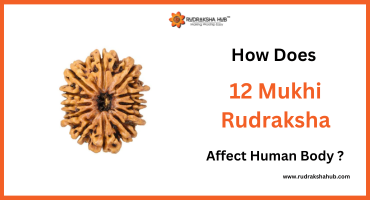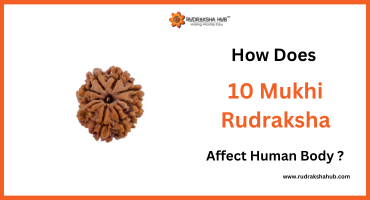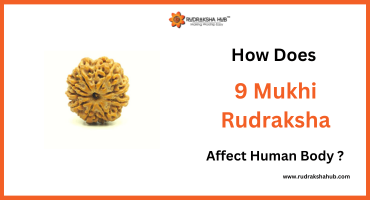
The Story of 51 Shaktipeeth
Shaktipeeth, as the name suggests, is a Peeth (home) of Shakti (Power). Goddess Durga is known as the Shakti or the better half of the male gender. Her incarnations have been the reasons to a Leela and they have always given out a message. There are 51 places of worship in India, called the 51 Shaktipeeth or Ekyaavan Shaktipeeth, which means 51 homes of Goddess Durga. There is an interesting story about the same as follows:
Lord Shiva was married to Goddess Parvati’s incarnation, Sati. Sati was the daughter of ruler and one of the most influential king, Raja Daksha. Daksha never liked Lord Shiva and he had married his daughter Sati to Lord Shiva only after he failed with ample reasons to not to. It was a big hue and cry and finally Daksha had to hive in and marry his only daughter Sati to Lord Shiva. He made it very clear on the marriage that he will not be associated with Lord Shiva in any manner. Lord Shiva had also agreed to this and he knew this cold war will lead to a disaster sometime soon.
Sometime after their marriage, Raja Daksha organized a huge Pooja and Hawan at his place. He invited every Dev, Devi, all his court men, all the Lords, Gods and Goddesses he knew. He sent personalized invitation to all the people in his network. He made sure to invite his daughter Sati and also not to invite his son-in-law and Sati’s husband, Lord Shiva. Lord Shiva understood the game Daksha was playing. He knew this Pooja and Hawan was a personalized insult in the direction of Lord Shiva. He also understood that since Sati loved her father, she would want to go to the Pooja and Hawan and she would also insist Lord Shiva to accompany. If Lord Shiva goes with her, he will be labeled as an unwanted guest who was not invited. This will disrespect his feelings and his state of being. If he denies going to the Hawan, Sati will be insulted for leaving her husband alone and visiting for Hawan and Yagya. If he denies Sati also to visit her father, he will become a laughing stock amongst everyone for being a husband who refuses his wife from being a part of her father’s celebration. Lord Shiva knew he was at crossroads in all the aspects and he will face insult in all his actions and all the options. He still decided to stay his grounds and asked Sati to not go for Daksha’s Hawan and Pooja. Sati was very angry and she said she will go to the Pooja even if Lord Shiva denies going. Having no option to convince Sati, Lord Shiva agreed for her to go and told her to make an excuse on his behalf.
Upon reaching Daksha’s place, Sati realized the trap she had laden her foot into. All the Gods and Goddesses were followed by their better halves and she was the only one who was there without her counterpart. She also understood that she was wrong in making a huge uproar about this with Lord Shiva because her father’s intensions to insult her husband was getting clearer with every passing unit of time. Sati made a resolve that she will leave right after the Pooja without waiting for the Pooja feast so that she has to interact less and face less humility. But Daksha had something else in his mind. He knew that Sati would try to escape without meeting people. He wanted to make Sati understand why her choice of marrying Lord Shiva was a bad decision. He made Sati sit at the Yagya Vedi, where the Yagya takes place and asked her to take charge of the Yagya as the Yajman. Sati understood that she will not be able to escape so easily and yet she was trying to find out the best way to minimize the damage.
When the Pooja began, the Panditji asked Sati to call her husband as the Pooja was to be done by a married couple and the presence of both the husband and the wife is important. This gave Daksha a great entry to cast in an insulting taunt at Sati insinuating that Lord Shiva couldn’t go with his wife for the Pooja also. Sati was already tired of all the previous ordeals and she decided to speak against it all when she couldn’t take any more of it. She stood up and confronted her audience against the hushed whispers but seeing no effect on the already done damage, she jumped in the fire of the Hawan yagya and gave up her life in order to protect herself and her husband from the continuous banters. Daksha did not see this coming and he understood that his plan had went into deep trouble. He understood that Lord Shiva was not just the preserver of the good, but also the destroyer of the evil and this time, the attack was highly personal and out of repair.
Lord Shiva on the other hand was able to witness everything due to his powers sitting at the Kailash Mansarovar. The one thing he also could not fathom before was the Sati’s resolve to avenge everything and jump in the fire. He immediately dashed for the Pooja place at Daksha’s and no one could dare to stop him. He had anger lashed in his eyes and the redness of his face made him care about nothing and no one at that juncture. Daksha knew trouble had landed at his door and come what may, Lord Shiva will never leave any stone unturned to make life difficult for him. Lord Shiva ran to the Hawan Kund and tried to wake up Sati as if she was in a very bad dream. When he couldn’t make sense of multiple tries and failed attempts, he picked up Sati and started running off hay wire in search of something or someone to heal Sati and make her alive again. Lord Shiva was seething in pain of lost love.
Lord Vishnu saw the entire episode and realized that Lord Shiva was acting as the destroyer of the good and could not bring justice to the actual evils of the Earth, he tried chasing Lord Shiva and comfort him to peace. When all hell broke loose and Lord Shiva didn’t pay attention to any efforts by Lord Vishnu and Lord Brahma, Lord Vishnu ordered his Sudarshan Chakra to chop down the parts of Sati and reduce the burden off Lord Shiva so that he can sit and listen to Lord Vishnu after the body of Sati had left him. Lord Shiva was so lost in his anger that he didn’t pay attention to the Sudarshan Chakra following him. The Chakra cut down the body of Sati in 52 total pieces and it was very late until Lord Shiva realized that the last piece of Sati he had with him was her body and that too was chopped off and fallen over to the places wherever they were cut. The 51 pieces fell off from Lord Shiva’s body after Sudarshan Chakra cut the body and these places became the 51 Shaktipeeth and are worshipped in Navratris by the devotees.
Lord Shiva grabbed the one last piece of Sati, that was her heart. He merged her heart into his and stated that Shiv is incomplete without his Shakti. Hence, it was observed that if a devotee cannot worship all the 51 Shaktipeeths, but worships Lord Shiva with all their heart, Lord Shiva will grant him the same power that he will get from worshipping the 51 Shaktipeeths also. It is also believed that the gateway to Goddess Durga’s heart is Lord Shiva’s blessings and the gateway to Goddess Durga’s blessings is Lord Shiva’s heart.
Why Shaktipeeths are worshipped in Navratri?
Navratri is a celebration of 9 days to mark the victory of Goddess Durga over the evil Mahishasura. She wooed him for nine days continuously in different forms and on the Ashtami, she killed him and swore with anger. The last day was celebrated with a feast and is thus a tradition now. A detailed blog on Navratri will be published on this platform later. But these 9 forms of Nav Durga and Nav Gauri have been inspired from the 51 pieces of Goddess Durga that had fallen off Sati’s body as mentioned in the above story. These became worship points for each of these have a special quality about them and thus are worshipped for those qualities. A list of these Shaktipeeths along with their locations are as follows:
- Kamakhya Temple, Guwahati, Assam
- Kalika, Kalighat Kali Temple, West Bengal
- Mahamaya, Amarnath, Jammu and Kashmir
- Phullara, Attahasa, West Bengal
- Bahula, Bardhaman, West Bengal
- Mahishmardini, Bakreshwar, Siuri Town
- Avanti, Bairavparvat Ujjain, Madhya Pradesh
- Aparna, Bhavanipur, Bangladesh
- Gandaki Chandi, Chandi River
- Bhamari, Janaasthaan
- Kottari, Hinglaj, Karachi
- Jayanti, Bourbhag Village, Bangladesh
- Yogeshwari, Khulna
- Jwala, Kangra, Himachal Pradesh
- Kali Kalmadhav, Amarkantak, Madhya Pradesh
- Devgarbha/ Kankleshwari, Birbhum, West Bengal
- Sravani, Kanya Kumari, Tamil Nadu
- Chamundeshwari, Chamundi Hills, Mysore
- Vimla, Murshidabad, West Bengal
- Kumara Shakti, Anandamayee Temple, West Bengal
- Shakti Bhraamari, Ratnavali, West Bengal
- Shakti Dakshayani, Mansarovar
- Gayatri Manibandh, Pushkar, Rajasthan
- Uma, Mithila, India-Nepal border
- Indraksh, Nainativu, Manipallavam
- Mahashira, Guhyeshwari, Pashupatinath Temple
- Bhawani, Chandranath Hills, Bangladesh
- Varahi, Panch Sagar, Uttar Pradesh
- Chandrabhaga, Junagarh, Gujarat
- Lalita, Prayag
- Savitri, Bhadra Kali, Haryana
- Maihar, Shivani, Satna, Madhya Pradesh
- Nandini, Nadikeshwari, Birbhum, West Bengal
- Sarvashail, Rakini, Kotilingeshwar
- Mahish Mardini, Karachi, Pakistan
- Narmada Shondesh, Amarkantak, Madhya Pradesh
- Sundari, Sri Sailam, Bangladesh
- Maha Lakshmi, Sri Shail, Bangladesh
- Tripura Sundari, Udaipur, Tripura
- Mangal Chandika, Ujjain, Madhya Pradesh
- Vishalakshi, Varanasi, Uttar Pradesh
- Kapalini Vibhash, Medinipur, West Bengal
- Ambika, Bharatpur, Rajasthan
- Uma, Vrindavan, Bhooteshwar, Uttar Pradesh
- Tripurmalini, Jalandhar, Punjab
- Amba, Amabaji, Guajarat
- Jai Durga, Deoghar, Jharkhand
- Danteshwari, Chhatisgarh
- Nabi Gaya, Biraj, Jaipur
- Devi Narayani, Suchindram, Tamil Nadu
- Sugandha, Shikarpur, Bangladesh
There are two other Shaktipeeths, which are very rarely talked about because they are not actually Shaktippeths, but have the same statute. They are:
- Bimala Shaktipeeth, Puri Orissa
- Tara, Tarini Sthana Peeth, Orissa
It is believed that these two places are where the Daksha Yagya took place and where Lord Shiva grabbed the last piece of Goddess Sati in his hands and took it within himself. Since, these two places hold a religious value, yet not as that of a Shaktipeeth, they are treated equals and the devotees can worship these SHaktipeeths for their worship needs.
Detailed blogs on multiple of these Shaktipeeths will be published in future. Stay tuned with Rudraksha Hub to know how the story of Adiyogi is connected with the story of 51 Shaktipeeth

